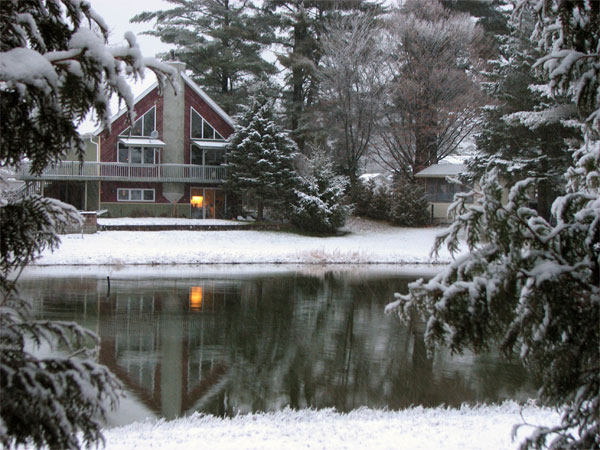During this festive season, it is definitely a time to be jolly, and to let adults become kids again but more importantly, it is a time to show our appreciation to the people around us, and share our blessings with the less fortunate.

May the bells of Happiness ring merrily for you at Christmas
and throughout the coming year!

Scotiana's team: Janice, Mairiuna and Jean-Claude
We would like to take this opportunity to thank you for your continuous support.
We don’t have gifts under a big Christmas tree, but would like to share this video about Christmas for you to enjoy!
Nollaig chridheil agus Bliadhna mhath ùr! ( Merry Christmas! in Gaelic 🙂
Hilary McNally goes in search of Christmas past and discovers how times have changed in Scotland over the years.
As Christmas lights twinkle in every window and shops overflow with frantic festive shoppers it may seem hard to believe that Christmas is a relatively new addition to the Scottish calendar.
But as recently as the 1960s it was just another day for many people as Scotland continued a tradition dating from the 16th century of officially ignoring Christmas Day.
Workers were often required to turn up at the office as normal and any festivities had to wait until New Year’s Day, the main holiday of the year.
A look at marriage records from the 1940s and 50s show a surprising number of weddings on Hogmanay simply because the following day was the only day off a working couple could expect.
“It sounds paradoxical but the reason Christmas wasn’t celebrated in Scotland was a religious one,” explains Dr Alan MacDonald, a lecturer in Scottish History at the University of Dundee.
“There was a fundamentalist view of Christianity which came in with the Reformation in 1560 and that was if something wasn’t in the Bible then it should not be celebrated.
“The only holy day that was kept was Sunday. Because Christmas day did not fall on a Sunday except by chance it was not celebrated. Easter was the same.
“In the early part of the 20th century it wasn’t even a school holiday. And there was still a postal delivery on Christmas Day, unless it was a Sunday, until the 1960s.”
Individuals did, of course, continue to celebrate Christmas in their own way with their own families but despite December 25 being officially declared a bank holiday as early as 1871 it took almost another century to begin to rival the New Year holiday.
Christmas Carnival Ferris Wheel - Princes Street - Edinburgh (Photo by emozart on Photobucket)
“The celebration of Christmas was a gradual thing,” says Dr MacDonald. “The change came about due to a softening of religious views although there are still churches in Scotland that don’t take any notice of Christmas.
“We have gradually fallen in line with the rest of the UK. The impact of the media is another consideration. It is interesting because it seems Scotland did not get its Christmas from England. One example is the use of the name Santa Claus rather than the English Father Christmas but whether that influence is from Europe or the USA is hard to say.”
The European influence also plays a part in explaining the original adoption of January 1st as a major holiday.
“New Year’s Day in Scotland in terms of calendar was March 25 until 1600,” explains Dr MacDonald.
“When January 1st was adopted in 1600 it brought Scotland into line with the rest of Europe but not with England which didn’t change until the 18th century.
“This was quite typical of the time. Scotland had been at war with England for so long that it tended to avoid doing what England was doing. In fact at the time that the New Year changed, the proclamation made some reference to all “other civilized nations” having the same date thereby implying that England was not a civilized nation.”
Although it was considered more sensible to start the New Year at the beginning of the month rather than in the middle the new date was also more religiously acceptable to Reformation Scotland than March 25 with its Catholic associations.
“March 25 was lady day,” says Dr MacDonald. “It is nine months before the 25th of December so it was believed to be the day Christ was conceived and therefore the start of his life. It was the theoretical date of conception.”
January 1 also provided a festival very close in time to Christmas and the winter solstice and offered an alternative celebration.
“40 years after Scotland dropped Christmas it changed the New Year and that is why the New Year was celebrated so much. It provided a focus and pulled people away from celebrating Christmas and Yule.”
Now though it would seem that Scotland is making up for lost time and its four Christmasless centuries by putting December 25 very firmly back on the holiday agenda.
Of course this doesn’t mean any weakening of support for New Year. Why have one wonderful holiday when you can have two!
Source: http://www.santasearch.org The Largest Elf-Edited Christmas Resource on the Internet.



Leave a Reply